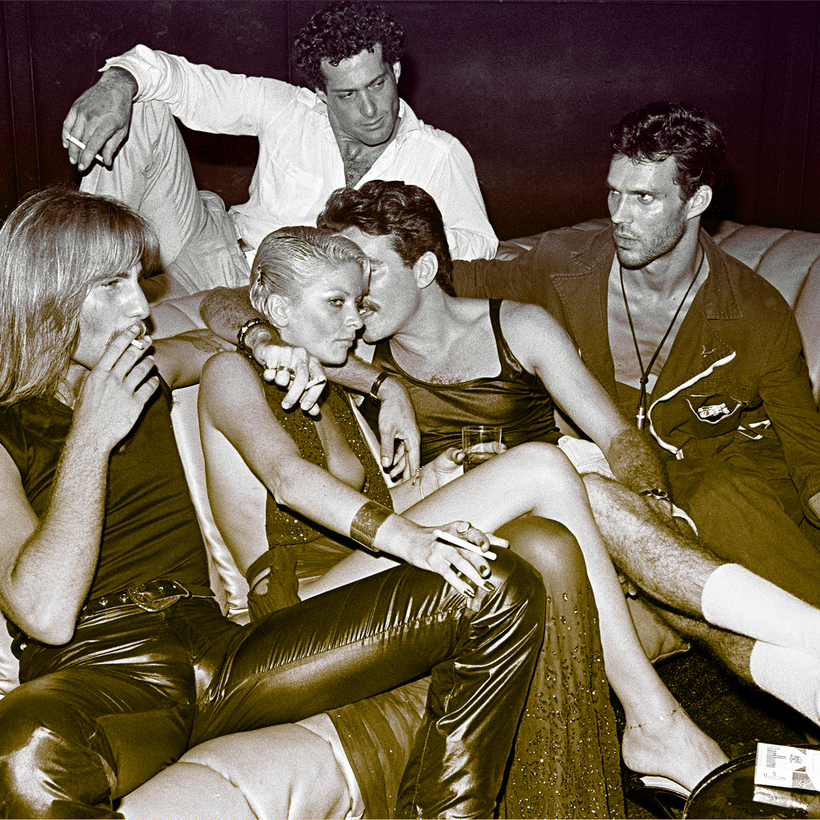Through the closures and openings, the mass exoduses and the trickling returns that New York, like the rest of the world, has endured since the start of the coronavirus pandemic, there’s one corner of the city that has remained conspicuously silent through it all: Lafayette Street, longtime stamping ground of the Eurotrash crowd.
The “Euros”—the hard-partying twenty- and thirtysomething sons and daughters of European royalty, aristocracy, or just plain money—have been a New York mainstay for as long as many of us can remember. But they fled in March of 2020, for what is New York when its restaurants and bars and nightclubs are closed?
Two years later, they’re still gone. Will they come back? Do we want them back?
And is there such a thing as New York without Eurotrash?
Lives of the Party
Eurotrash uses WhatsApp instead of iMessage, wears vintage designer clothes, and went to Georgetown, Brown, or Columbia rather than Cornell, Stanford, or Duke. Instagram is their preferred social-media app, where they take artsy pictures of plants, not yachts. On weekdays they lounge at Italian restaurants and complain that they’re broke, and on weekends they shun the Hamptons in favor of “artsier” Mexico (often because they don’t know enough Americans to qualify for a Long Island invitation).
The crowd is the same one the Greek shipping heir Taki Theodoracopulos wrote about in the 80s, in his “Eurotrash” column for the East Side Express, and the same one the writer Candace Bushnell briefly ran with—and chronicled as part of her New York Observer columns, a collection of which would become Sex and the City—when she dated an unnamed European with “a title and a castle.” They are New York’s naughty foreigners, who run around the city late into the night, work part-time or not at all, live more lavishly than the rest of us, and turn up their noses at dull Americans.
The Euros date back at least to the 70s, when the young scions of aristocratic families flew over from the old continent to flee political extremism—Italy’s Red Brigades, Spain’s Franco—not to mention their terribly conservative relatives, who wouldn’t let them misbehave. Among the early arrivals were Albert II of Monaco, Princess Chantal of France, and Bianca Jagger, from Nicaragua. (Despite the name, Eurotrash aren’t strictly defined by nationality—the term can apply to Middle Easterners, South Americans, Asians, or just about anybody who has lived in Paris or London, has a Loulou’s membership, or attended a snobby Swiss boarding school such as Aiglon or Le Rosey. As The Washington Post put it in 1984, “It … has less to do with geography than with style. And money.”)
By the mid-80s, there were so many European transplants in the city that New York magazine ran a story with the headline The Last Time I Saw Paris in April It Was in New York. These were the youths who made espressos and croissants mainstream in a city of to-go coffees and jelly doughnuts. And everyone knew everyone else in the tight-knit, freewheeling world of Eurotrash, which in the 80s meant that Prince Dimitri of Yugoslavia, Prince Jean of Luxembourg, and Fanny Pereire, a descendant of Napoleon’s banker, might have shared cabs and coke.
In those days, they clustered largely on the Upper East Side, at the famed French restaurant Le Bilboquet, the dimly lit Monkey Bar, and at Régine’s on Park Avenue, where they smoked cigarettes, and where the eponymous owner gave out gold membership cards in Cartier cases.
New York didn’t have the gall to call them “Eurotrash,” but the rest of the city did, to which Andy Warhol replied, “They aren’t trash. They’re my friends.”
In the 80s, Prince Dimitri of Yugoslavia, Prince Jean of Luxembourg, and Fanny Pereire, a direct descendant of Napoleon’s banker, might have shared cabs and coke.
New York’s Eurotrash outlived the 80s. A stock-market plunge in 1987 prompted an exodus, but by the early 2000s, The New York Times had reported on New York’s “Eurofestation.” They were back.
And they’d moved the show downtown, favoring Félix, the French restaurant on West Broadway, for boozy afternoons, the Italian chain Serafina for European-style food, and clubs such as Chelsea’s Bungalow 8, where palm trees evoked the Beverly Hills Hotel.
In 2010, Guest of a Guest tried to define this unruly crowd. “Eurotrash consumes drugs (mostly cocaine and ecstasy) with an abandon that shocks even narcotically-inclined Americans still saddled with Catholic/Jewish guilt and/or Protestant propriety,” stated the article. “Eurotrash wears sunglasses that could double as highway billboards, often while staggering out of Bushwick warehouse raves at noon.” And: “Eurotrash thinks of the Concorde every day and cries.”
“They aren’t trash. They’re my friends.”
Fast-forward 10 years and all of the above was still true, except that Concordes are a thing grandparents talk about, and cheap flights mean jaunts back to the homeland for long weekends are not as infrequent as they were.
Though the hangout spots have changed over the years, the Euros themselves didn’t all that much. Recently, it was the next generation of the original Euro crowd—of those same aristocrats and moguls who ran wild at Studio 54—who hung out at French and Italian restaurants in Nolita, NoHo, and SoHo; who partied until morning at an abandoned boat in a Brooklyn shipyard, or at secret venues organized by techno organizations like ReSolute; and who walked bleary-eyed down Lafayette for a much-needed cappuccino a few hours later.
Then came the spring of 2020.
Flights of Fancy
“It was time to leave the city,” a former Columbia student from Stockholm tells me. “It was my stint naturally coming to an end.”
“I was turning 33,” a Swiss investment banker says, “and I thought, If I don’t leave now, when am I ever going to?”
Ever since the U.S. travel ban, the cozy two-tops in front of Café Select have been devoid of cigarette smoke. The Florentine owners of Bar Pitti have been grumpier than usual, scowling as they serve up disproportionate orders of penne with vodka sauce to unimaginative New Yorkers. French accents are no more at Lucien on First, and the few Parisian regulars left are often heard bemoaning their fresh baguettes from the Fifth Arrondissement. New York’s Eurotrash went back to its jet-setting roots.
Now the borders have opened, but many Europeans still grumble that New York isn’t what it used to be—even if they can’t quite put their finger on why.
Perhaps it’s the dirty streets, littered with even more trash than usual, or the staggering rat population, buoyed by outdoor dining. (In November, the Italian newspaper Corriere della Sera ran a story on the city’s grittiness, which shocked visitors who had arrived on some of the first post-coronavirus flights late last fall.) Or the still-empty neighborhoods—New York’s biggest companies may be mandating in-person work, but Midtown Manhattan still feels like a ghost town.
“It seems more drab than it used to be,” a Parisian friend tells me. “It’s missing its spark,” says a visiting Spaniard. The days of spontaneously walking into a party and happening to know 10 people feel long gone.
Other visitors, though, observe that, without its preppy counterparts, the city has its edge again. “It’s dirty, it’s noisy. It’s explosive,” an enthusiastic British friend tells me. “It doesn’t feel manicured.” The real New Yorkers—be it by blood or kindred spirit—have stayed.
Eurotrash move en masse, so it will take a few curious adventurers to settle on this side of the Atlantic before people fall back onto the New York wagon. Maybe, like in the late 80s, it will take a decade for them to venture back. However long, when they feel like they have four or five people to meet up with, the Euros will again be renting apartments on Mott and Prince, which they will leave vacant in the summer months.
Until then, see you in St. Tropez.
Elena Clavarino is an Associate Editor for AIR MAIL


